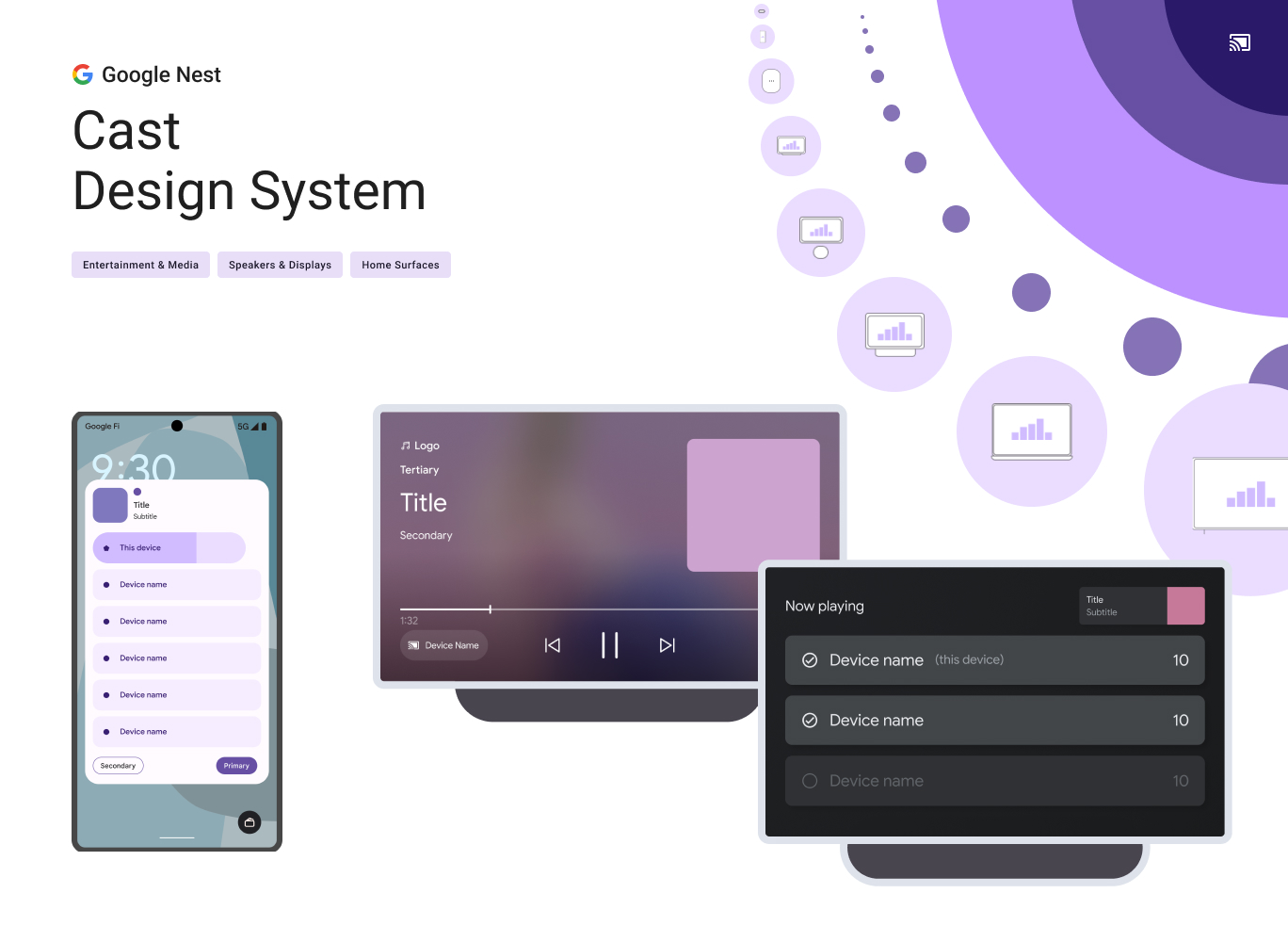OVERVIEW
DIRECTV-STREAM is a subscription streaming service that allows user to watch live TV from major broadcast and cable networks, while aggregating media from your favorite streaming apps all in one place. The interface recently underwent a redesign with a "content-forward" focus and a more modern UI. I was approached by the IXD team to develop a design system that governs and maintains these products and services on 10ft surfaces.
The main points of focus were the creation of a documentation library in Figma and on the web, tokenization of the system with variable collections, as well as the growth and improvement of the new component library.
PROCESS
- System-Wide Audit: Inventory existing foundations, components (styles, scales, variants) and their structure.
- New System Architecture: Organizing page and asset library structures, developing component syntax.
- Foundations: Creating grid systems, updating and growing color and typography styles. Providing definition and usage documentation for all the foundational elements. Tokenizing all styles and measurements.
- Component Library: Rebuilding existing components with properties and variants. Providing usage notes and documentation for all components in the system.
- Online Migration: Recreating the documentation library in Confluence, with links to Figma documentation and component sets.
- Governance: Overlooking the intake and archiving processes in the system. Educating and onboarding old and new users to system changes and methodologies.
ROADBLOCKS
- At the start of the project, the system had no supporting documentation, apart from a few spec annotations for dev handoff, which were not utilized due to lack of clarity and communication.
- The internal online hub tool used by the team was a legacy version of Confluence, with limitations to layout and visual presentation. Vital UI information was being communicated through spreadsheet type tables with poor navigation.
- There was a clear need for education on design system methodology and current design techniques utilized in Figma for proper layout behavior and customization, as well as onboarding the dev teams on proper usage of dev mode.









